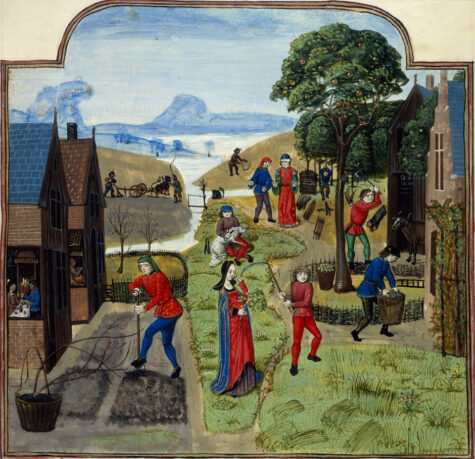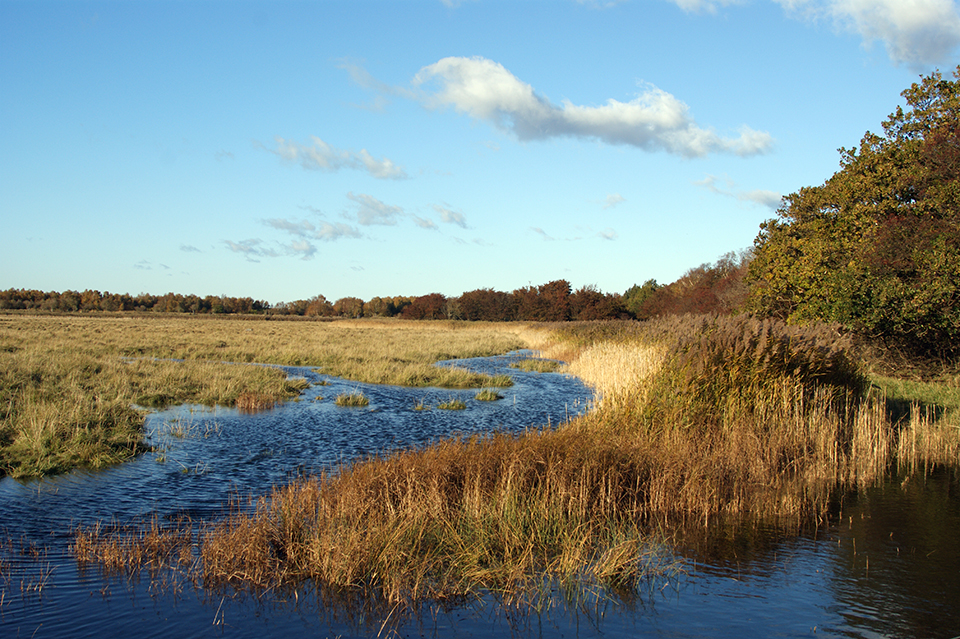How did people in the Middle Ages view their surroundings? What was their idea of a livable world? Which part was sacred? What profane? And what was wilderness? Did they even think of their world inside these dichotomies?
Medieval landscapes may be perceived in numerous ways, such as, for instance:
- Geophysical landscapes (how did geography and climate set limits and create opportunities)
- historical landscapes (how did they physically shift through time)
- settled landscapes (how were they settled)
- inhabited landscapes (how were they lived in)
- farmed landscapes (how were they fenced, tilled, harvested and exploited)
- conquered landscapes (how were they subdued and exploited)
- landscapes of pilgrimages, migrations, or exile (how were landscapes set in motion)
- spiritual landscapes (how were landscapes imbued with sacrality)- and many more
Whichever way, we approach these landscapes – or reconstructions thereof – we have to remember that medieval ways of imagining landscapes differed fundamentally from ours.
We tend to think of landscapes as a given — something which is “there” and which we pass through on our way from here to hither. Occasionally, we may meet a changed sense of rhythm, discovering a tree newly felled by a storm or a brook meandering through a new hollow. Or we detect a new project or development on the cusp of being carried out. However, these shifts and modifications do not change that for modern and urbanised people, a landscape is a “thing” – a background, a stage set, a backdrop; something, through which we pass.
Such was seldom the case with medieval landscapes. The reason being that most people would spend most of their life in the open – herding cattle or sheep, tilling the fields, fishing in the rivers, walking to mill or market, going on a pilgrimage or to war, or simply just bivouacking as homeless people somewhere in the great outdoors. Anyone who has ever been out and about for more extended periods of time will know that suddenly, the landscape comes alive, shimmering and shifting with sights, sounds, smells, savours and stings. Here, the surroundings move. We should remember that in the Middle Ages most people were obliged to spend most of their lifetime outdoors.
However, delving into the meaning of such words as landscape and pagus, subtle differences might be detected. While the Germanic and Northern word vividly show the idea of landscapes as something constantly forged out of the great wilderness, the Mediterranean people moved into a more settled landscape, the pagus. At least, the elite envisioned it so.
Two Ideas about Landscape

Source: Wikipedia
Thus, the word landscape is impregnated with the etymologies of” land” and” shape”. Both words derive from Proto-Indo-European *lendʰ + *(s)keb via Proto-Germanic, From *landą + *-skapiz, that is *landaskapiz m . As such, the word is found in all modern-day Germanic “languages”, such as English, German, Frisian, Danish, Norwegian and Swedish. Correspondingly, it may be found in any of these languages’ pre-runners such as Gothic, Old English, Frisian, Saxon, Dutch, High German, and Norse. Remarkably, also, the word seems to more or less mean the same throughout north-western Europe, where landscape means the form the land takes when shaped or wrought in a certain way according to the ideas circulated by people dealing with their land and its outer fringes in the process of becoming.
Intriguingly, though, the corresponding Latin word (with its Romanesque derivations) “pagus” has a more fixed meaning. Derived from Proto-Italic *pāgos, from Proto-Indo-European *peh₂ǵ- – “to fasten, fix”, thus perhaps “a space with fixed boundaries” – it does not involve the idea of land as something which may in any sense be wild or untamed. Rather, this word designates the already formed or shaped landscape, belonging to a “civitas”. Hence, pagus means district, province, region, area, countryside, territory – or simply village. Accordingly, in medieval Latin texts, pagus would foremost mean a settled landscape with hamlets and villages lying outside the city, while a smaller part thereof might be termed pagellus (a wapentake or a hundred) – or just about any delineated inhabited countryside. Derived from this are expressions such as “In Pago Austrasiorum” or “In Pago Allemanorum”, which is the land of the ethnic groups, in this case the Austrasians or Allemans. In classical Latin, Paganus would be a person living there, a rustic or rural person, in short, a peasant (same linguistic root). By derivation, “paganus” also came to mean “pagan”, an unlettered and accordingly heathen or uncivilised (unchristian) person. By the way, such pagans or peasants were best kept at a distance; hence “pago” might also mean a fence erected to protect tilled acres or vineyards – or the boundary between the wild north and the civilised south.
What we “see” here are two different medieval takes on any land – something which is in the process of being created, crafted or taken under the wings of less than sedentary people, as opposed to an already well-structured and organised piece of land consisting of a civilised centre and a somewhat rougher periphery. Lurking outside would be nature and wilderness.
Keeping this in mind, to explore any medieval “landscape” or “pagus” in Northern versus Southern Europe is to investigate the “ideas” or “thinking” behind the specific form which a landscape might take in various locations and corners of Europe and at any time between AD 500-1500. Hence, it stands to reason any overview will be sketchy.
Wishing to unlock how people in the Middle Ages regarded the landscapes in which they lived or moved around, we may proceed in three different ways: one is to study the philosophy and thinking exposed by medieval theologians, philosophers and cartographers who largely inherited the classical idea of what a “pagus” might mean. Another is to delve into the poetic and artistic renditions of landscapes presented in literature and figurative art inside wider Europe, in different contexts and different languages. A third possibility is to “read” the traces of the medieval landscapes as formed by people as they moved through the landscapes and set their mark, “authoring” and “ordering” their surroundings.
SOURCES:
Inventing Medieval Landscapes. Senses of Place in Western Europe.
Ed by John Howe and Michael Wolfe
University Press of Florida 2002
Life in Medieval Landscapes: People and Places in the Middle Ages
By Sam Turner and Bob Silvester
Windgather 2011


